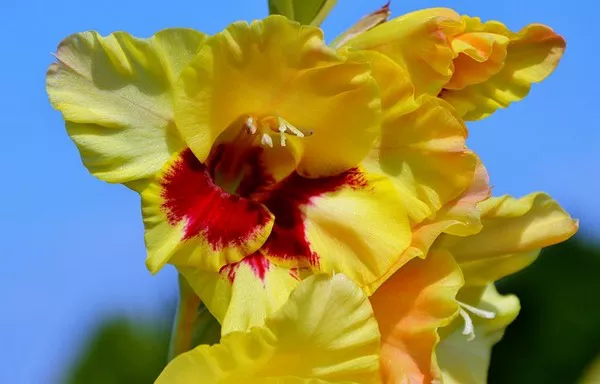The language of flowers, also known as floriography, has been used for centuries to convey emotions, sentiments, and messages without uttering a word. Each month of the year is associated with a specific birth flower, and for August, that flower is the vibrant and elegant gladiolus. In this article, we will delve into the history, symbolism, and characteristics of the August birth flower, shedding light on the beauty and significance of the gladiolus.
A Brief History of Birth Flowers
The tradition of associating specific flowers with particular months dates back to ancient times. The practice is believed to have originated in Roman and early Christian cultures, where flowers were often used in religious ceremonies and celebrations. Over time, various societies and cultures developed their own lists of birth flowers, each with its unique symbolism and significance.
In the modern era, birth flowers have gained popularity as meaningful gifts and decorations for birthday celebrations. People often choose flowers that correspond to their birth month to add a personal touch to their special day. The August birth flower, the gladiolus, stands out as a symbol of strength, sincerity, and beauty.
The Gladiolus: A Botanical Overview
The gladiolus, scientifically known as Gladiolus spp., belongs to the Iris family (Iridaceae) and comprises over 260 different species. This diverse genus is native to various parts of Africa, Mediterranean Europe, and Asia, with many species also cultivated as ornamental plants worldwide. The name “gladiolus” is derived from the Latin word “gladius,” meaning “sword,” which is a reference to the plant’s sword-like leaves.
The gladiolus is characterized by its tall, graceful spikes of colorful, trumpet-shaped flowers. These blooms can vary in size and come in a wide range of hues, including vibrant reds, soft pinks, sunny yellows, and pristine whites. The striking appearance of the gladiolus has made it a favorite among florists, gardeners, and flower enthusiasts.
Symbolism of the Gladiolus
The symbolism of the gladiolus has evolved over time, and today, it is associated with several meaningful sentiments and characteristics:
Strength and Resilience: The gladiolus is often seen as a symbol of strength and endurance. Its tall, sturdy stem and sword-like leaves represent the idea of standing firm and resilient in the face of adversity. This symbolism makes it an ideal gift for those who have shown courage and determination in challenging situations.
Sincerity and Integrity: The gladiolus is also associated with sincerity and integrity. Its vibrant and unapologetic beauty is seen as a reflection of the honest and genuine nature of those born in August. Giving gladiolus as a gift can convey a heartfelt message of trust and authenticity.
Infatuation and Romantic Love: In the language of flowers, the gladiolus can symbolize infatuation and romantic love. Its dramatic and passionate appearance makes it a suitable choice for expressing deep emotions and desire.
Remembrance and Tribute: Gladioli are often used in funerals and memorial services as a symbol of remembrance and tribute. Their graceful presence helps honor the memory of a loved one and provides comfort to those grieving.
Cultivating Gladioli
Growing gladioli can be a rewarding experience for both novice and experienced gardeners. These plants thrive in well-drained soil with plenty of sunlight. Here are some key tips for successfully cultivating gladioli:
Planting: Gladiolus corms (similar to bulbs) should be planted in the spring, once the danger of frost has passed. Choose a location with full sun and well-draining soil. Plant the corms 4-6 inches deep and 6-8 inches apart.
Watering: Keep the soil consistently moist but not waterlogged during the growing season. Water deeply when the soil starts to dry out.
Staking: Due to their height, gladioli may require staking to prevent them from bending or falling over. Use bamboo stakes or other supports to keep the plants upright.
Deadheading: Remove spent flowers to encourage continuous blooming. This also helps redirect the plant’s energy into producing new flowers.
Overwintering: In regions with cold winters, dig up gladioli corms in the fall before the first frost. Allow them to dry for a few weeks, then store them in a cool, dry place until the next planting season.
Gladiolus Varieties
The gladiolus genus encompasses a wide variety of species and hybrids, each offering its unique charm and beauty. Here are some popular gladiolus varieties:
Gladiolus grandiflorus: This is the most commonly cultivated species and is known for its large, showy flowers in various colors.
Gladiolus nanus: A shorter variety of gladiolus, often used for border plantings or in pots and containers.
Gladiolus callianthus (Abyssinian Sword Lily): Recognized for its unique, fragrant white flowers with dark purple centers.
Gladiolus ‘Green Star’: A distinctive variety with greenish-yellow flowers that add a touch of novelty to gardens and floral arrangements.
Gladiolus ‘Blue Moon’: Known for its striking violet-blue flowers that make a bold statement in gardens and bouquets.
The gladiolus is a versatile flower that can be incorporated into various settings, from formal flower arrangements to informal garden landscapes.
Conclusion
The gladiolus, the August birth flower, embodies strength, sincerity, and beauty. Its rich history and diverse symbolism make it a meaningful choice for birthday celebrations, romantic gestures, and memorial tributes. Whether you’re a gardener looking to add a touch of elegance to your landscape or someone seeking a heartfelt gift, the gladiolus is a beautiful and symbolic choice that captures the essence of August and all it represents.


